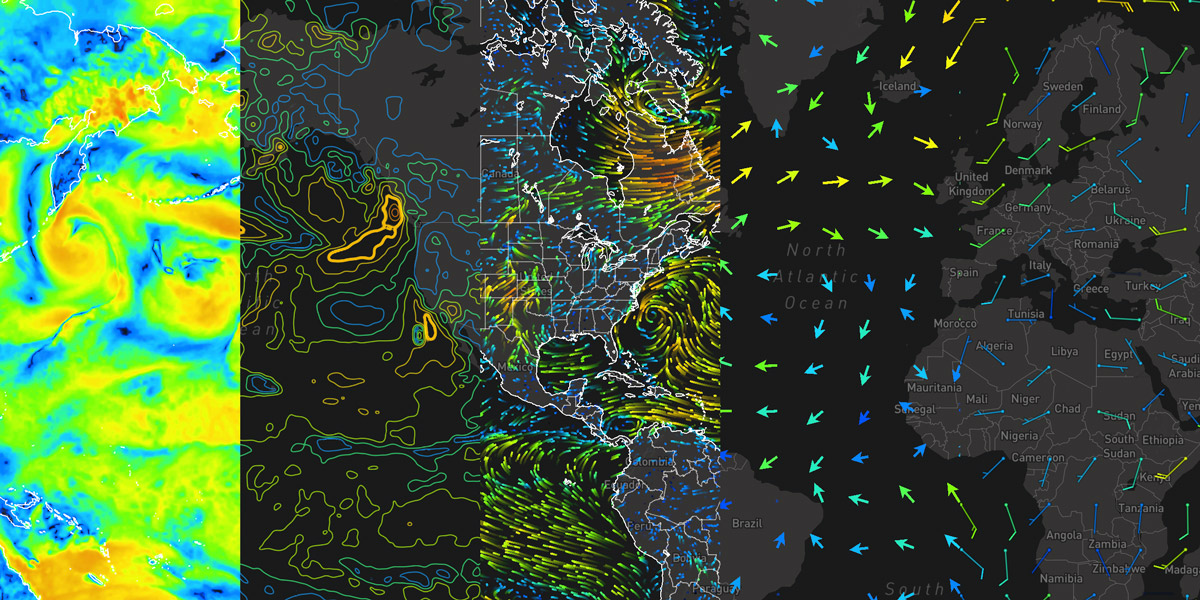Styling
Layer styles, also referred to as paint properties, define how layer data will be rendered on the map. The available styling options are depenedent upon the data source and configured layer renderer type. Simply styling a single data source a variety of ways can tell a different story behind the data depending on your needs.

The following layer render styles are supported and will depend on your data source type:
- raster: Renders static raster imagery
- fill: Renders vector polygon geometry as filled shapes
- line: Renders vector polygon and polyline geometry as lines
- circle: Renders vector points as circles
- symbol: Renders vector points as images, glyphs or custom GLSL shaders **
- sample: Renders encoded data by sampling values and colorizing them based on a color scale
- grid: Renders a grid of points as symbols by sampling encoded data at those grid points
- contour: Renders isolines by sampling encoded data
- particle: Renders vector data, such as wind speed or ocean currents, as particle flow fields
- heatmap: Renders the density of vector point data
While each layer render style is configured with its own default styling, you'll likely want to override these defaults for your own applications. Refer to the Styles reference guide for complete details regarding the configurable paint properties for controlling your data's presentation.
Data-Driven Styles
Instead of styling layers using static values, you can derive a layer's style information from the data returned by the layer's data source. This is useful for styling individual features of a layer differently based on one or more properties of that feature and can offer a considerable amount of flexibility in generating the desired data visualization.
Check out the in-depth documentation on data-driven styling to learn more.
Styling Weather Layers
In addition to controlling the styling of custom layers, you can also override the default styles our SDK provides for all built-in weather layers using the same paint style configurations. Learn more about styling weather layers by reviewing our detailed guide.